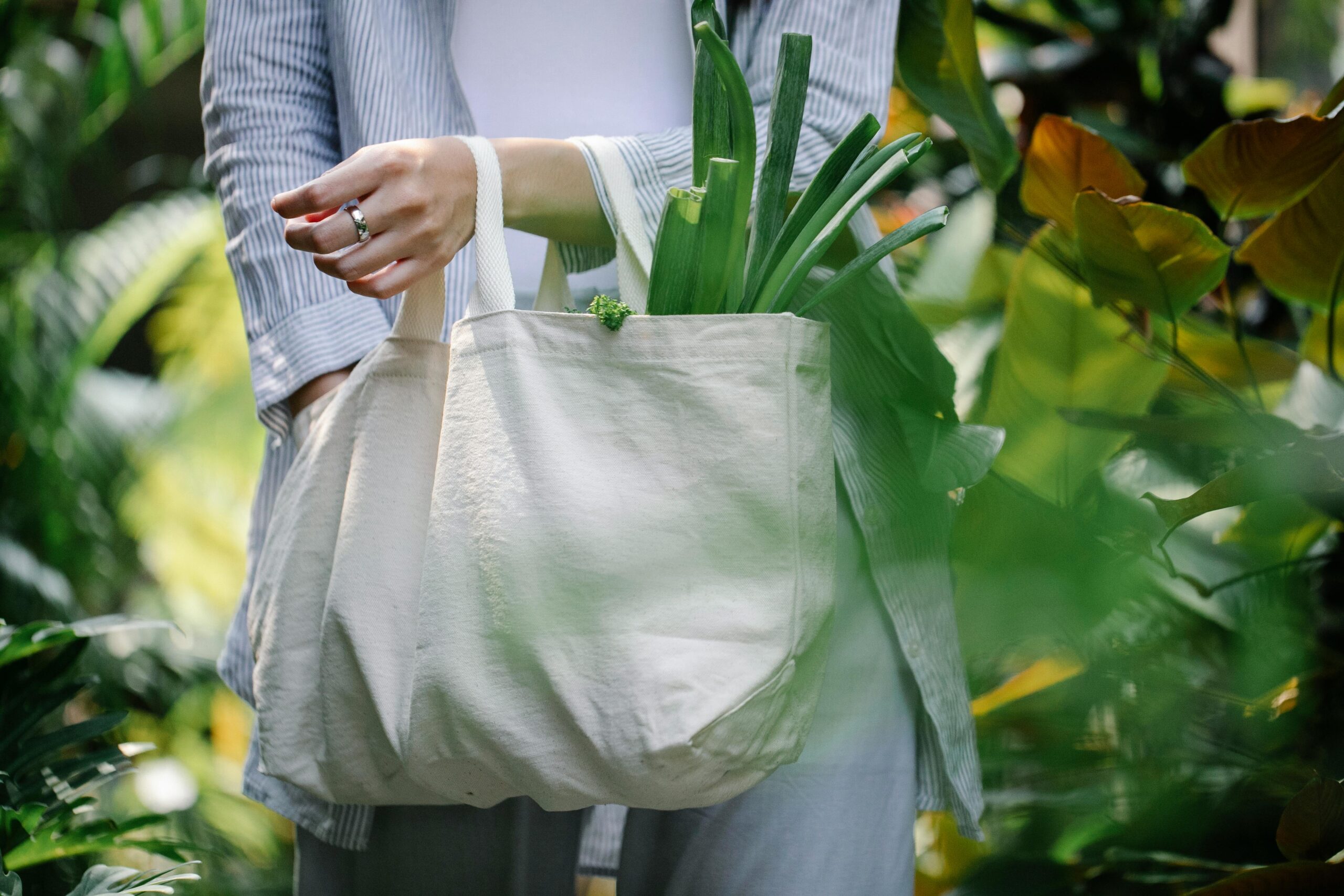Making Sustainability a Habit (Not a Hurdle)
Let’s face it—the idea of “going green” can feel overwhelming. Zero-waste kitchens, capsule wardrobes, solar panels, backyard compost bins…it all sounds great, but where do you start? And more importantly: how do you keep it up without burning out?
The truth is, sustainability doesn’t have to be all or nothing. In fact, small, consistent changes often have the biggest impact over time. Think: progress, not perfection. By weaving simple, eco-conscious choices into your daily routine—without making yourself miserable—you can reduce your footprint and feel good doing it.
Here are five sustainable habits that are easy to adopt, cost-effective, and actually stick.

Read More: Get To Know the Five R’s Of Sustainability
1. Swap Single-Use for Reusables
It might sound basic, but replacing disposable items with reusables is one of the most effective and accessible ways to reduce waste. Americans throw away over five trillion plastic bags each year, according to the Center for Biological Diversity, and nearly 50 million plastic water bottles says Project Clean Water.
Try this:
- Keep a stash of reusable grocery bags in your car or by the door
- Invest in a high-quality water bottle or coffee thermos
- Carry a set of travel utensils and a cloth napkin
These simple swaps in your morning commute, lunch break, and errands can eliminate hundreds of single-use items from your personal waste stream each year. And with so many stylish options out there—from cute canvas totes to colorful insulated bottles—it’s a chance to show your style while doing something good for the planet. Win-win.
2. Start Composting (Even in Small Spaces)
According to the USDA, food waste makes up 30-40% of the food supply in the United States. And when organic material ends up in a landfill, it doesn’t just decompose—it emits methane, a potent greenhouse gas.
Composting helps divert waste from landfills and creates nutrient-rich soil. Even if you live in an apartment, there are options:
Try this:
- Use a countertop compost bin and drop scraps at a local collection, farmers market, or community garden
- Sign up for a community compost program or private curbside service
- Try a bokashi system or worm bin if you’re feeling adventurous
- Re-use vegetable scraps for other recipes, like carrot, onion, and celery ends, to make a homemade veggie broth.
Got a sunny windowsill? You could even try growing herbs from kitchen scraps. You can plant chives from the grocery store, or even experiment with sprouting avocado pits. These tiny gardens offer big rewards—not just in fresh flavor, but in connecting you to your food. And, in turn, you can use your compost to fuel new growth (and your next meal). It all adds up to a cycle that’s restorative, not wasteful.
3. Embrace Secondhand Shopping
The fashion industry is responsible for roughly 10% of global carbon emissions and is a major consumer of water and energy (United Nations). Fast fashion in particular encourages a cycle of overproduction and waste.
Buying secondhand extends the life of existing goods and keeps them out of landfills. It also reduces the demand for new resources.
Try this:
- Check thrift stores, vintage shops, or online platforms like thredUP, Depop, or Poshmark
- Host a clothing swap with friends
- Buy used furniture and home goods through local marketplaces or consignment shops
- Search for a second-hand craft store near you for DIY supplies
Choosing pre-loved over brand-new is a small act of resistance against throwaway culture.

Read More: What It Takes to Become a B Corp
4. Power Down What You’re Not Using
It sounds simple, but turning things off when you’re not using them can reduce energy waste in a big way. Electronics and appliances left plugged in continue to draw power—known as phantom energy—which costs the average U.S. household up to $165 per year, according to the U.S. Department of Energy.
But conserving energy isn’t just about electricity. It’s about water, packaging, fuel, and digital energy, too. Limiting your ChatGPT queries or streaming use (yep, that counts!), shutting off the tap while scrubbing dishes, and choosing local goods to reduce shipping emissions are all ways to live more efficiently.
Try this:
- Unplug chargers, coffee makers, and toasters when not in use
- Use smart power strips to cut off power automatically
- Simply, turn off the lights when you leave the room
- Turn off your sink while scrubbing dishes to avoid extra water waste
- Choose local shopping over online deliveries for small items when it makes sense
These small choices add up—not only lowering your bills, but lightening your load on the planet.
5. Vote with Your Dollars
Every purchase you make is a tiny vote for the kind of world you want to live in. Whether it’s your morning coffee or a big-ticket furniture upgrade, your dollars have power. Supporting businesses that prioritize ethical sourcing, sustainable materials, and transparent practices sends a message—and helps shift the market in a greener direction.
At Avocado, we believe in full transparency and circular design. From our Zero Waste Program to our use of GOTS-certified organic materials, we’re constantly working to do better by the planet.
Try this:
- Look for B Corp, Climate Neutral, or 1% for the Planet certifications
- Support local makers, artists, and farmers
- Choose fewer, better things that last longer
Intentional consumption isn’t about being perfect. It’s about becoming a bit more aware.
Progress Over Perfection
Sustainability doesn’t have to be extreme to be effective. The key is to build habits that work for your life and stick with them. Whether it’s bringing a tote bag to the store or unplugging your laptop at night, small steps add up—especially when they become second nature.
And hey, a quick note before you Marie Kondo your entire house: don’t feel pressured to toss what you already own in favor of something more eco-friendly. Using what you have until it reaches the end of its life is one of the most sustainable things you can do. Replace when necessary, not just because it’s trendy.
So, start where you are. Pick one habit. Then another. Then keep going.
Because living lighter doesn’t mean doing everything. It means doing something consistently. And that’s how real change happens.

Read more: Tread Lighter, Live Fuller: How to Raise Eco-Conscious Kids
Have feedback on our story? Email [email protected] to let us know what you think!

Shop Pillows
The Essential Organic Pillow Collection
Gentle, breathable, non-toxic support.







